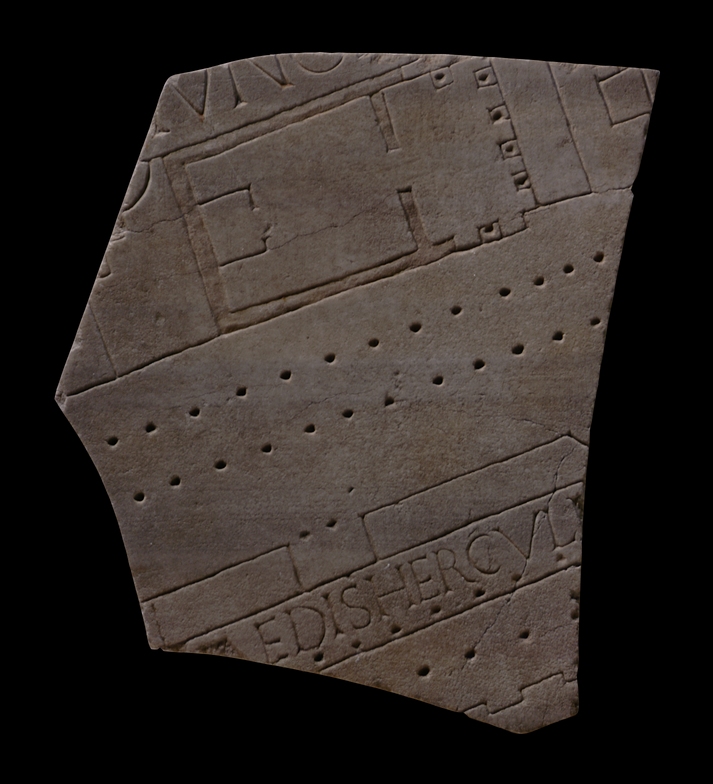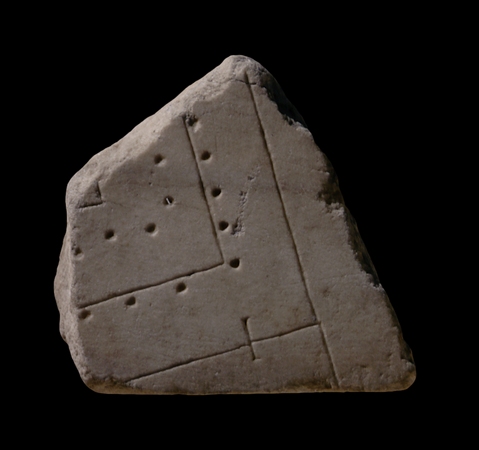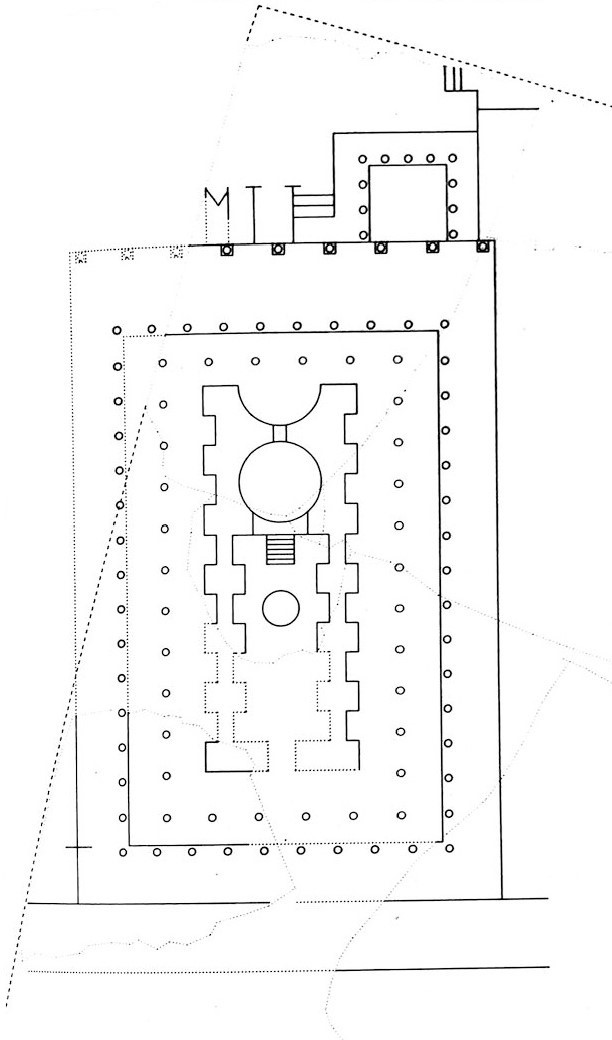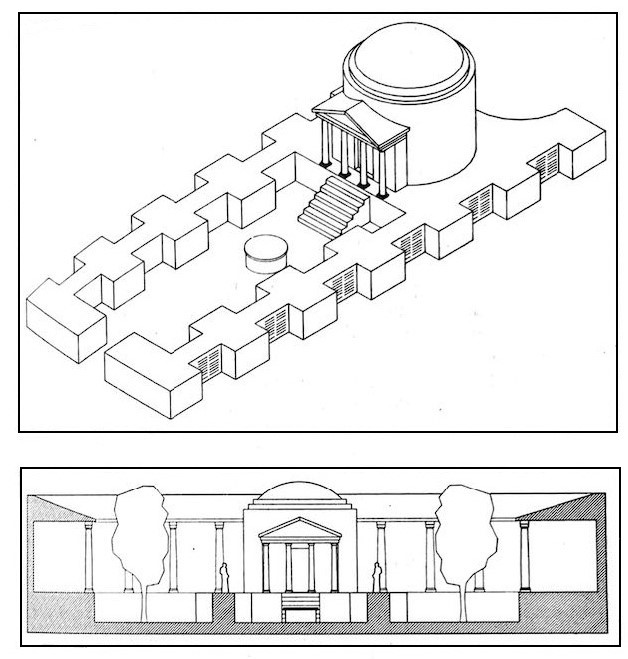Hercules Musarum
Province
Italia
Italia (Pleiades)
Italia, Regio I (Pleiades)
Location
Sublocation
Region IX Circus Flaminius
Campus Martius (Pleiades)
Garden
Garden of the Hercules Musarum
Keywords
- temples (buildings)
- auditorium
- column (architectural element)
- exedra (site element)
- lucus (grove)
- niche (architectural elements)
- podium (building divisions)
- porticoes
- statue (free-standing sculpture)
Garden Description
The Aedes Hercules Musarum was located in the southern Campus Martius. It was enclosed by the Porticus Philippi (61 x 92 m.) in the late Republican period. Known from several fragments of the Severan Marble Plan (Forma Urbis Romae), it was also adjacent (to the northwest) to the Porticus Octaviae (Figs. 1–2). M. Fulvius Nobilior, consul in 189 BCE (and censor with M. Aemilius Lepidus in 179 BCE), may have built the temple between 187 and 179 BCE (Eumen. Pan. 5.7.3) after his triumph. Ovid (Fast. 6.801–2) and Suetonius (Aug. 29.5) state that L. Marcius Philippus (who had a triumph in 34 or 33 BCE) restored the temple and built the portico around it.
Knowledge of the complex derives primarily from the Severan Marble Plan (FUR) and ancient sources. The complex consisted of a circular temple (aedes) dedicated to Hercules Musarum (Hercules of the Muses) set within a porticus (Fig. 3). In the mid-1980s, P.A. Gianfrotta excavated a small part of the central edifice, discovering a small interior corridor (1 m. wide), restored in the imperial period. These excavations demonstrated that few alterations had been made to the original structure, suggesting that the Marble Plan depicts the original portico. The temple was located on a south-facing podium (c. 48 x 21 m., H 3.5 m) with an exedra (diam. 11 m). On the sides of podium were a series of twelve niches (W. 3.5 m), where the fasti may have been displayed (Macrob. Sat. 1.12.16 | Trans.). North of the podium were nine bases, possibly for statues of the nine Muses of Ambracia (Plin. HN 35.66; Ov. Fast. 6.797–812).
The FUR shows that the temple was surrounded by two rows of dots that are closely, but not perfectly, aligned. Richardson argued the dots represent a double portico; however, Castagnoli argues that the inner row of dots were trees. The different spacing of the inner dots (4–5 m.) and of the outer dots (3–4 m.) would also prove problematic in a double portico and lends support to Castagnoli’s interpretation. The elevation difference between the portico and ground level was also c. 3 m., further supporting Castagnoli’s interpretation (Fig. 4). Thus, the dots could be interpreted as a lucus (or grove), perhaps of the poplars associated with the cult of Hercules and a flood-tolerant species suitable to the Campus Martius.
The collegium poetarum formally gathered near the complex, and so perhaps the porticus and its exedra could have housed a poetics school with an auditorium for lectures or discussions of poetry and works of art; perhaps functioning like an Alexandrian-inspired Museion (Val. Max. 3.7.11; Plin. HN 34.19).
Figures

Fig. 1. Temple of Hercules Musarum on a fragment of the Severan Marble Plan.

Fig. 2. Temple of Hercules Musarum on the Severan Marble Plan.

Fig. 3. Base plan of the Temple of Hercules Musarum (Coarelli, 1997).

Figure 4. Axonometric reconstruction of the aedes Hercules Musarum and transverse section showing possible planting areas (Coarelli, 1997, Figs. 113, 114).
Dates
Built between 187 and 179 BCE; restoration and portico constructed in Late Republican era (post 33 BCE)
Excavation Date
1980s
Bibliography
- L. Richardson, “Hercules Musarum and the Porticus Philippi in Rome,” American Journal of Archaeology 81 (1977), pp. 355–61. (worldcat) | (JSTOR)
- F. Castagnoli, “Porticus Philippi,” Analecta Romana Instituti Danici suppl. 10 (1983), pp. 93–104. (worldcat)
- F. Coarelli, Il Campo Marzio, 1997, pp. 452–84. (worldcat)
- A. Viscogliosi, s.v. “Porticus Philippi,” Lexicon topographicum urbis Romae IV, pp. 146–48. (worldcat)
Pleiades ID
Contributors
ORCID
E.R. Macaulay (0000-0002-4551-7631)
Publication date
17 April 2021